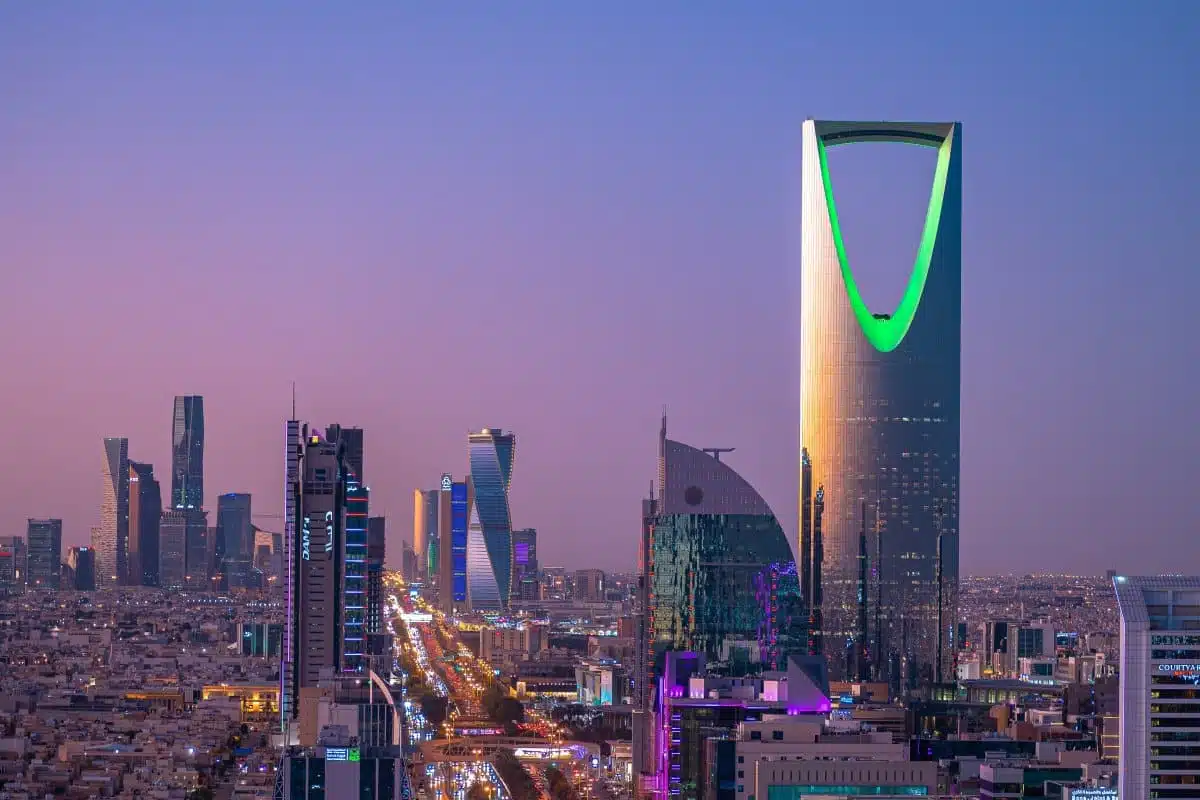Saudi Arabia, a land of ancient civilizations, stark desert beauty, and modern innovation, offers many cultural and natural attractions. From the bustling streets of Riyadh to the serene landscapes of the Empty Quarter, the country is a juxtaposition of the old and the new. This guide explores the top destinations and experiences in Saudi Arabia, providing insights into the nation’s heritage, its natural wonders, and the vibrant culture that defines it. Whether you’re exploring the archaeological sites, diving the Red Sea’s underwater magic, or experiencing the warmth of Saudi hospitality, this guide serves as your compass to the Kingdom’s treasures.
1. Riyadh
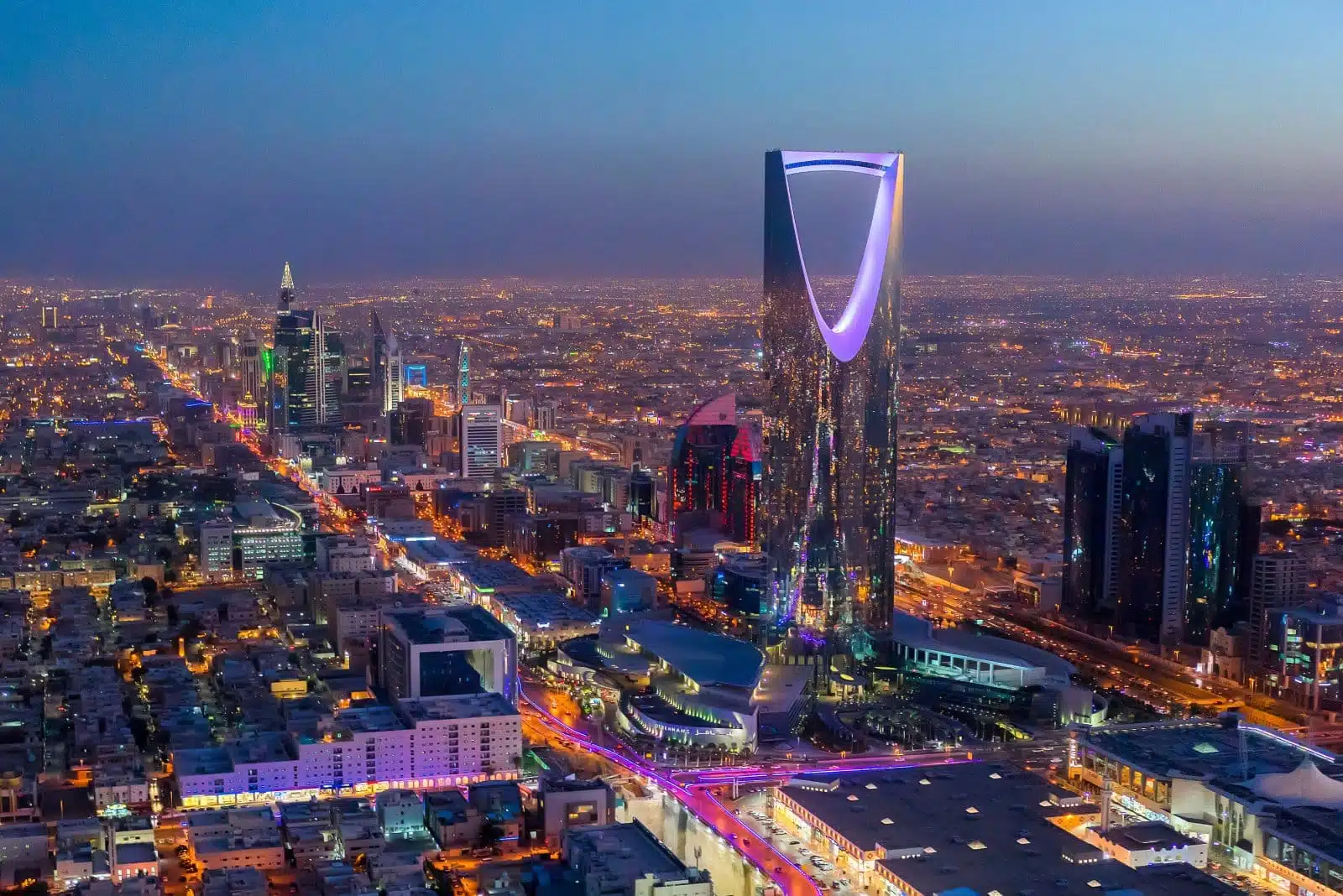
Image Credit: Shutterstock / adznano3
As the capital and financial hub of Saudi Arabia, Riyadh is a city where modernity meets tradition. The skyline, dominated by sleek skyscrapers like the Kingdom Centre, symbolizes the city’s rapid development and economic power. Yet, amidst this contemporary landscape, Riyadh retains its cultural soul. The historical center of Diriyah, with its mud-brick walls, offers a glimpse into the nation’s roots. For art enthusiasts, the city’s growing art scene is showcased in galleries and events like the annual Riyadh Season. The local cuisine, ranging from traditional Saudi dishes to international gourmet experiences, provides a culinary journey not to be missed. Riyadh’s vast desert landscapes, just a short drive from the city, offer adventures like dune bashing and camel trekking, starkly contrasting the urban environment.
Insider’s Tip: Visit the National Museum to deeply understand Saudi Arabia’s history and cultural heritage.
2. Jeddah
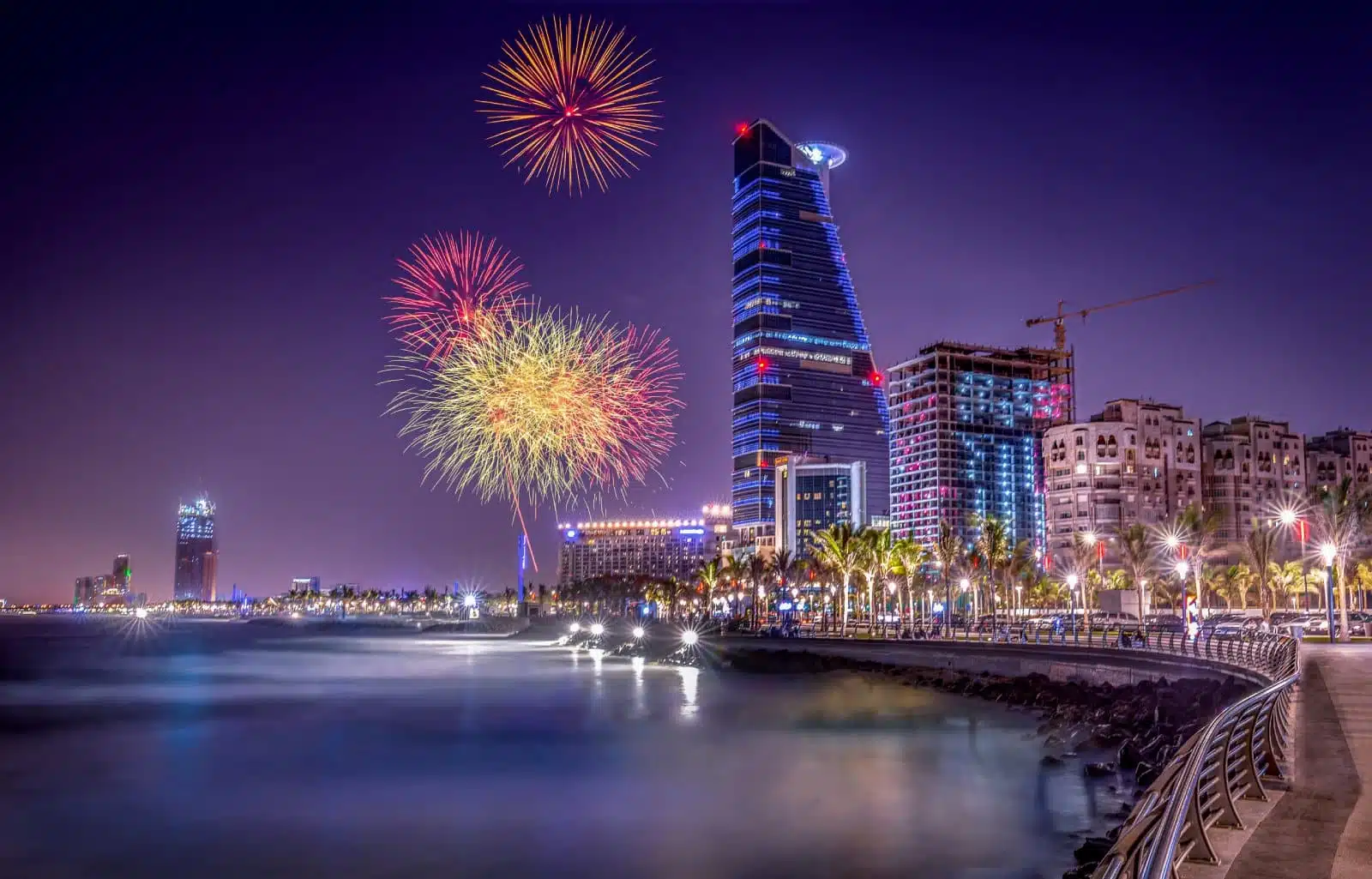
Image Credit: Shutterstock / Osama Ahmed Mansour
Jeddah, the gateway to the holy city of Mecca, stands out for its unique blend of ancient history and modern seaside living. The historic Al-Balad district, with its centuries-old buildings and bustling souqs, is a UNESCO World Heritage site that tells the stories of pilgrims and traders who have passed through the city over the millennia. Jeddah’s corniche, stretching along the Red Sea, is a testament to the city’s love for the waterfront, offering pristine beaches, sculptural installations, and family-friendly parks. The city is also a culinary capital, with seafood playing a central role in its diverse and rich dining scene. For diving enthusiasts, the Red Sea’s coral reefs are accessible from Jeddah, offering some of the best underwater experiences in the world.
Insider’s Tip: Explore the Al-Balad district at night when the historic buildings are beautifully illuminated.
3. Al-Ula

Image Credit: Shutterstock / Vadim_N
Al-Ula highlights Saudi Arabia’s commitment to opening its doors to the world, showcasing its rich heritage and stunning natural beauty. This ancient oasis, set amidst dramatic desert landscapes, is home to the UNESCO-listed heritage site of Hegra (also known as Madain Saleh), the southern capital of the Nabatean kingdom and a sister city to Petra. Al-Ula’s labyrinth of sandstone mountains and archaeological sites narrates a history spanning thousands of years, from Lihyanite and Nabatean civilizations to the present day. The area is a destination for adventure and exploration, with rock climbing, hiking, and hot air ballooning opportunities. The Maraya Concert Hall, a mirrored building reflecting the surrounding landscape, hosts a variety of cultural events, bridging the gap between the ancient and the contemporary.
Insider’s Tip: Take a helicopter tour for breathtaking aerial views of Al-Ula’s landscapes and archaeological sites.
4. The Empty Quarter (Rub’ Al Khali)
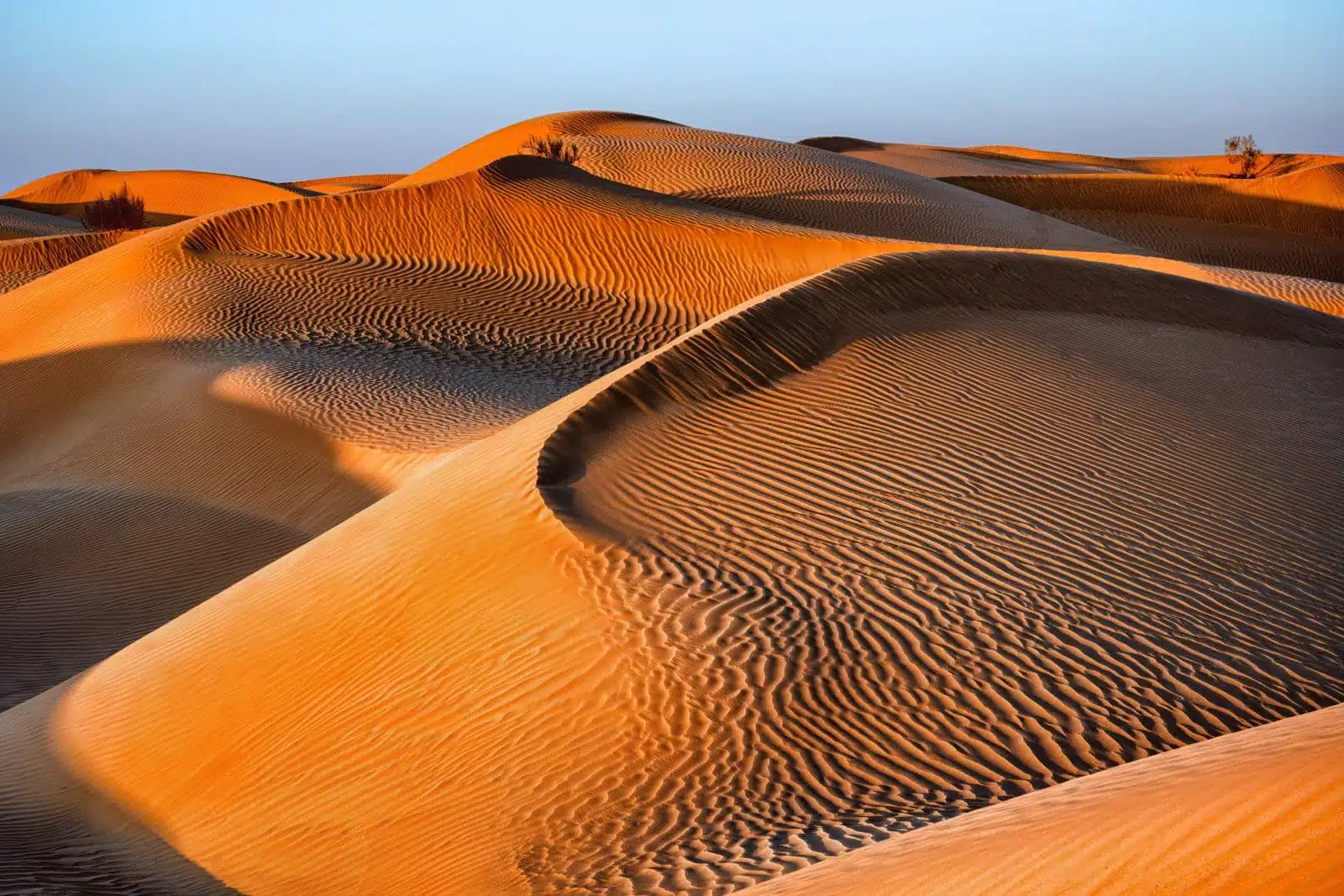
Image Credit: Shutterstock / Jiri Vlach
The Empty Quarter, or Rub’ al Khali, epitomizes the vast, unspoiled beauty that characterizes much of Saudi Arabia’s landscape. As the largest contiguous sand desert in the world, it offers an unparalleled adventure into the heart of the Arabian wilderness. The desert’s immense dunes, some towering hundreds of meters high, change colors with the day’s light, from soft morning hues to sunset’s deep reds and oranges. This region is a place of stark beauty and rich history, with ancient trade routes once traversing its challenging terrain. Today, it’s a destination for those seeking the thrill of dune bashing, the serenity of a desert camp under the stars, or the unique trekking experience across endless sands. The Empty Quarter’s sheer scale and the profound silence of its vast expanses offer a sense of solitude and introspection unmatched anywhere else.
Insider’s Tip: Join a guided desert safari to safely navigate and experience the best of the Empty Quarter.
5. Abha
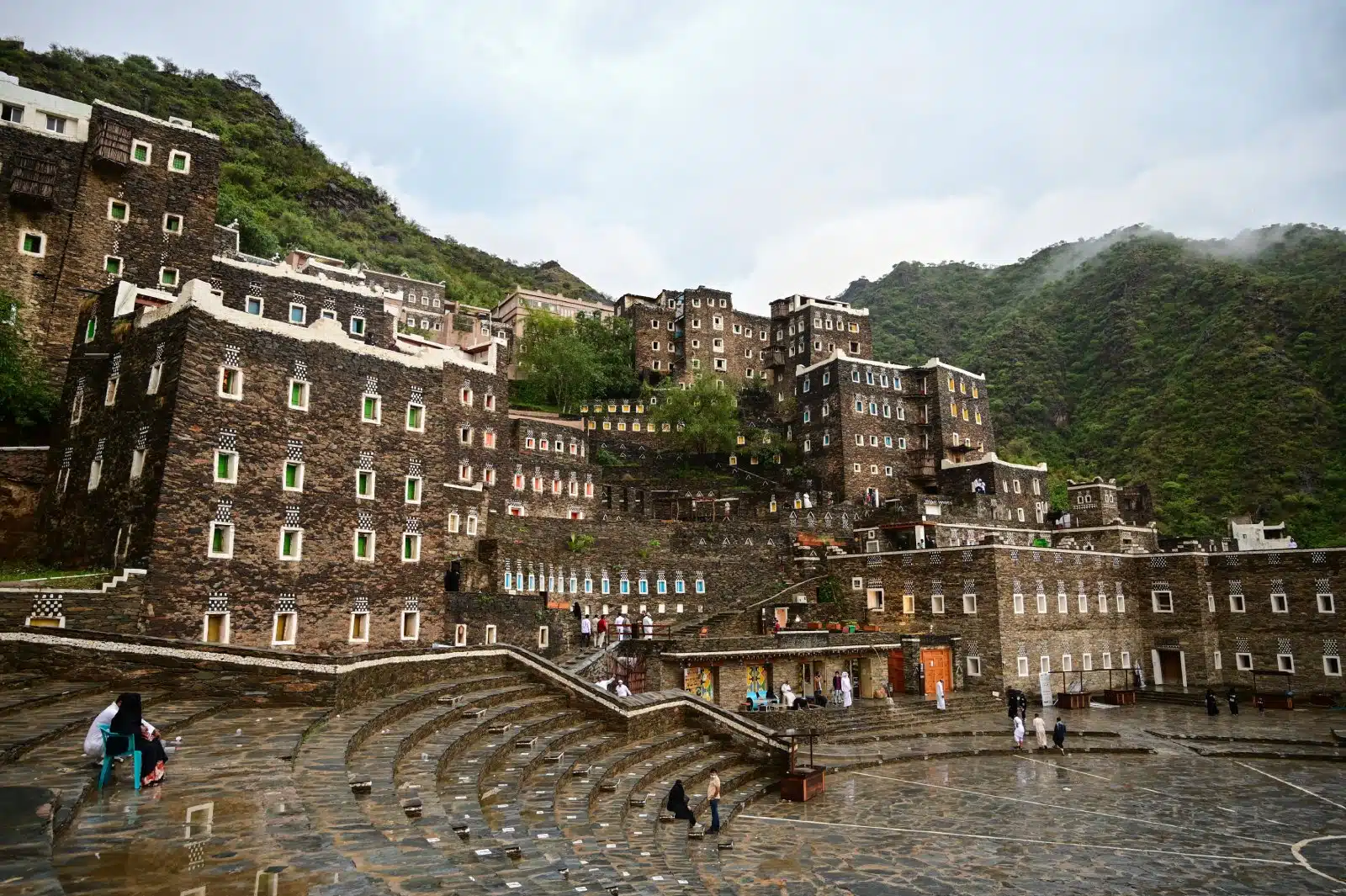
Image Credit: Shutterstock / H1N1
Abha, the capital of the Asir province, is a city where Saudi Arabia’s topography takes a surprising turn. Situated more than 2,000 meters above sea level, Abha enjoys a cooler climate, making it a popular summer retreat. Dense mountain forests and terraced farms surround the city, starkly contrasting the desert landscapes in the kingdom. Abha’s cultural scene is vibrant, with the Al-Muftaha Arts Village and the annual Abha Festival showcasing the region’s artistic talents and heritage. The nearby Asir National Park offers outdoor adventures, including hiking and bird watching, in a setting of stunning natural beauty. The region’s traditional architecture, seen in the mud-brick fortresses and the iconic hanging village of Habala, adds to Abha’s charm, making it a fascinating destination for those looking to explore Saudi Arabia’s diverse landscapes and cultures.
Insider’s Tip: Visit the Habala Village, accessible by cable car, for stunning views and a glimpse into the area’s traditional way of life.
6. Dammam
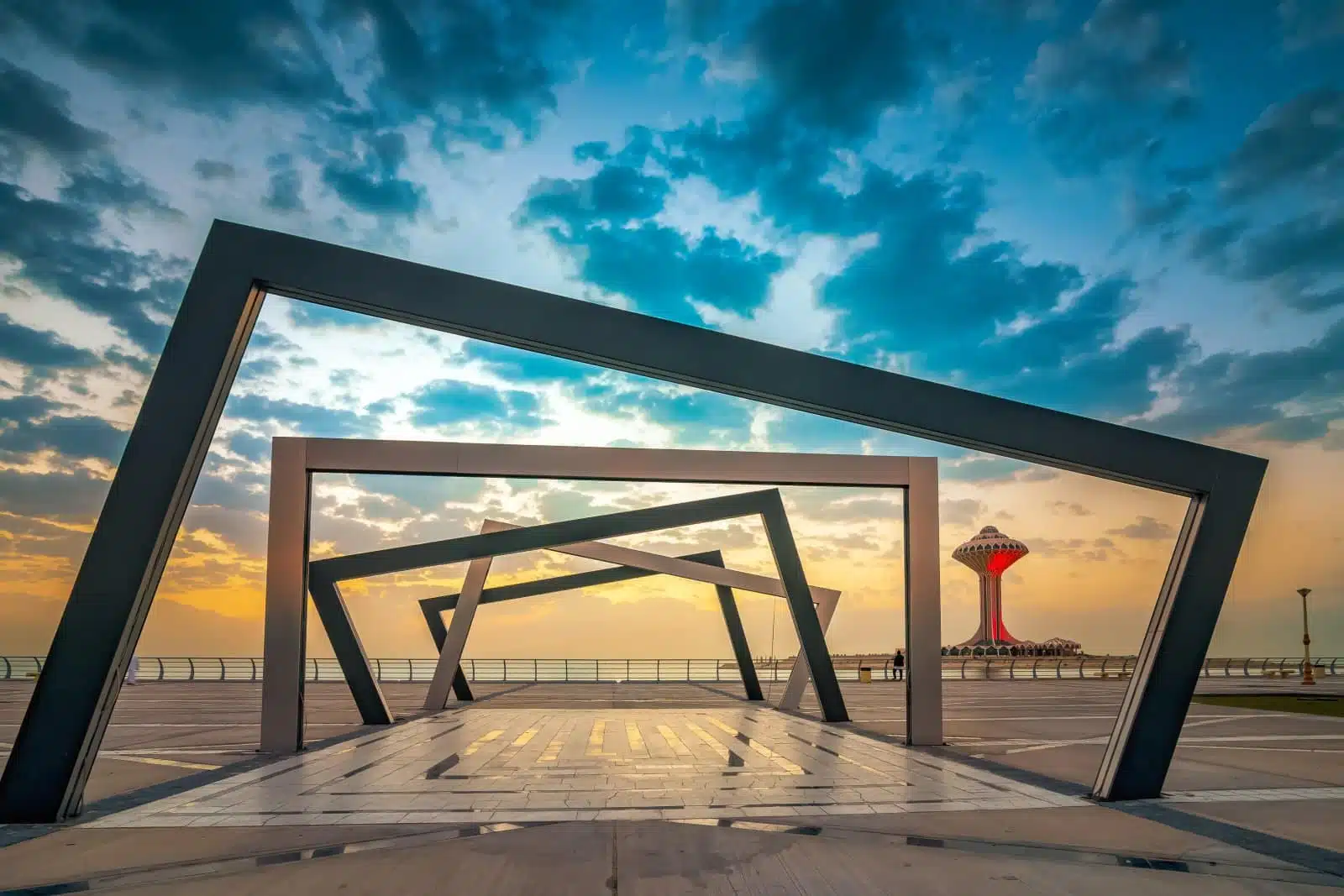
Image Credit: Shutterstock / AFZAL KHAN MAHEEN
Dammam, the capital of the Eastern Province, is the oil heartland of Saudi Arabia but offers much more beyond its industrial facade. The city’s corniche is a beautifully landscaped waterfront area, perfect for leisurely walks and family picnics, with stunning views of the Arabian Gulf. Dammam is also a gateway to exploring the wider Eastern Province, including the Tarout Island with its ancient castle and the tranquil Half Moon Bay. The city’s cultural offerings include the Dammam National Museum, which provides insights into the region’s history and heritage. For those interested in the modern economic story of Saudi Arabia, a visit to the nearby Dhahran Exhibition Center offers a look at the oil industry’s impact on the region and the country as a whole.
Insider’s Tip: Explore Al-Marjan Island, a man-made island offering recreational activities and splendid sea views.
7. Najran
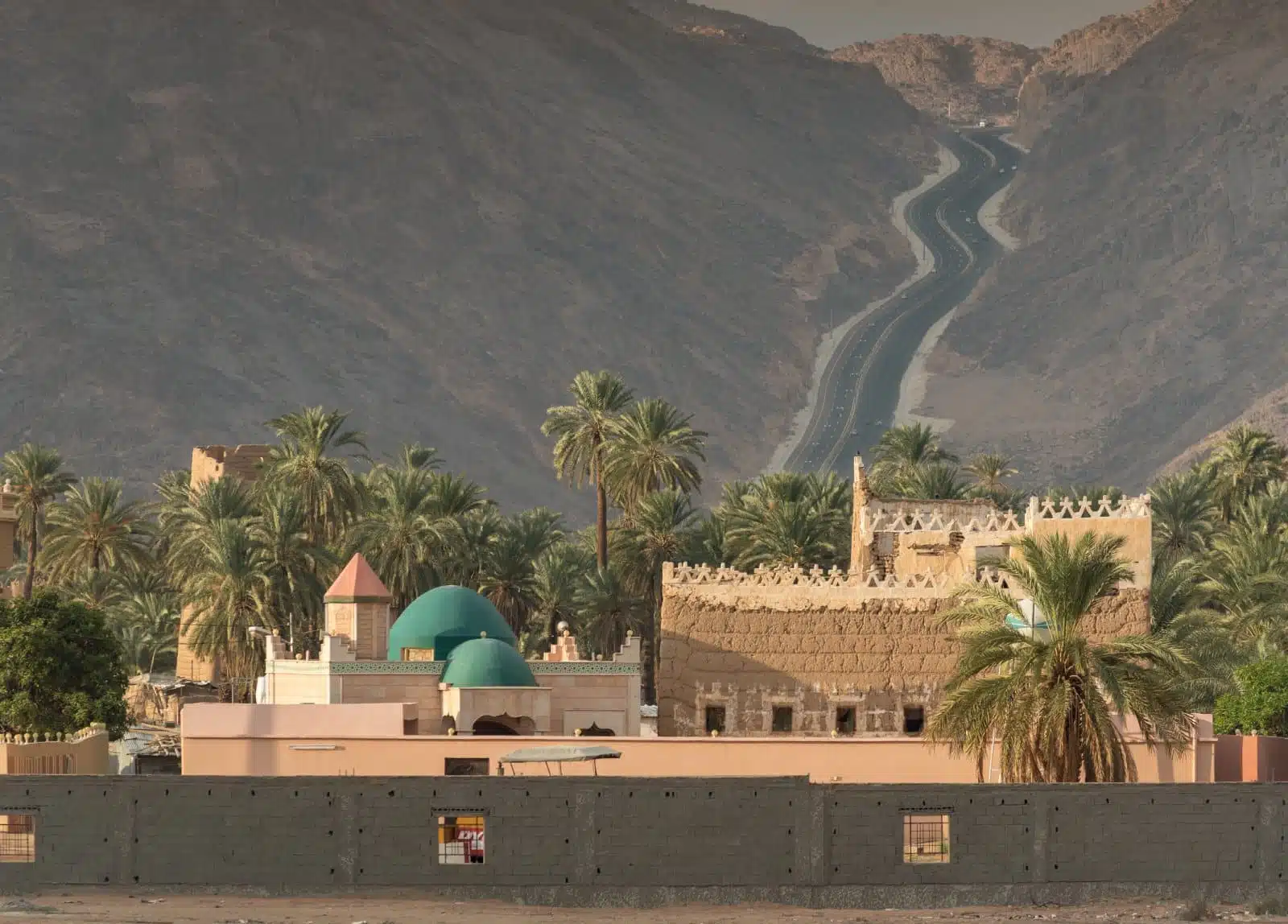
Image Credit: Shutterstock / Khater73
Najran, a city on the Yemen border, showcases Saudi Arabia’s diverse natural and cultural landscapes. The region is home to lush oases, stark deserts, and impressive mountain ranges. Najran’s rich history is displayed at the Al-Ukhdood archaeological site, an ancient settlement with pre-Islamic inscriptions and ruins. The city’s dam, one of the largest in Saudi Arabia, has created a green belt of agricultural land in the desert. Najran’s unique architecture, characterized by mud-brick towers and colorful markets, reflects the blend of Yemeni and Saudi cultures. The area is also known for its traditional handicrafts, including pottery and woven textiles, making it a fascinating destination for those interested in the cultural heritage of the Arabian Peninsula.
Insider’s Tip: Visit the Najran Museum to explore the area’s rich history and cultural heritage.
8. Taif
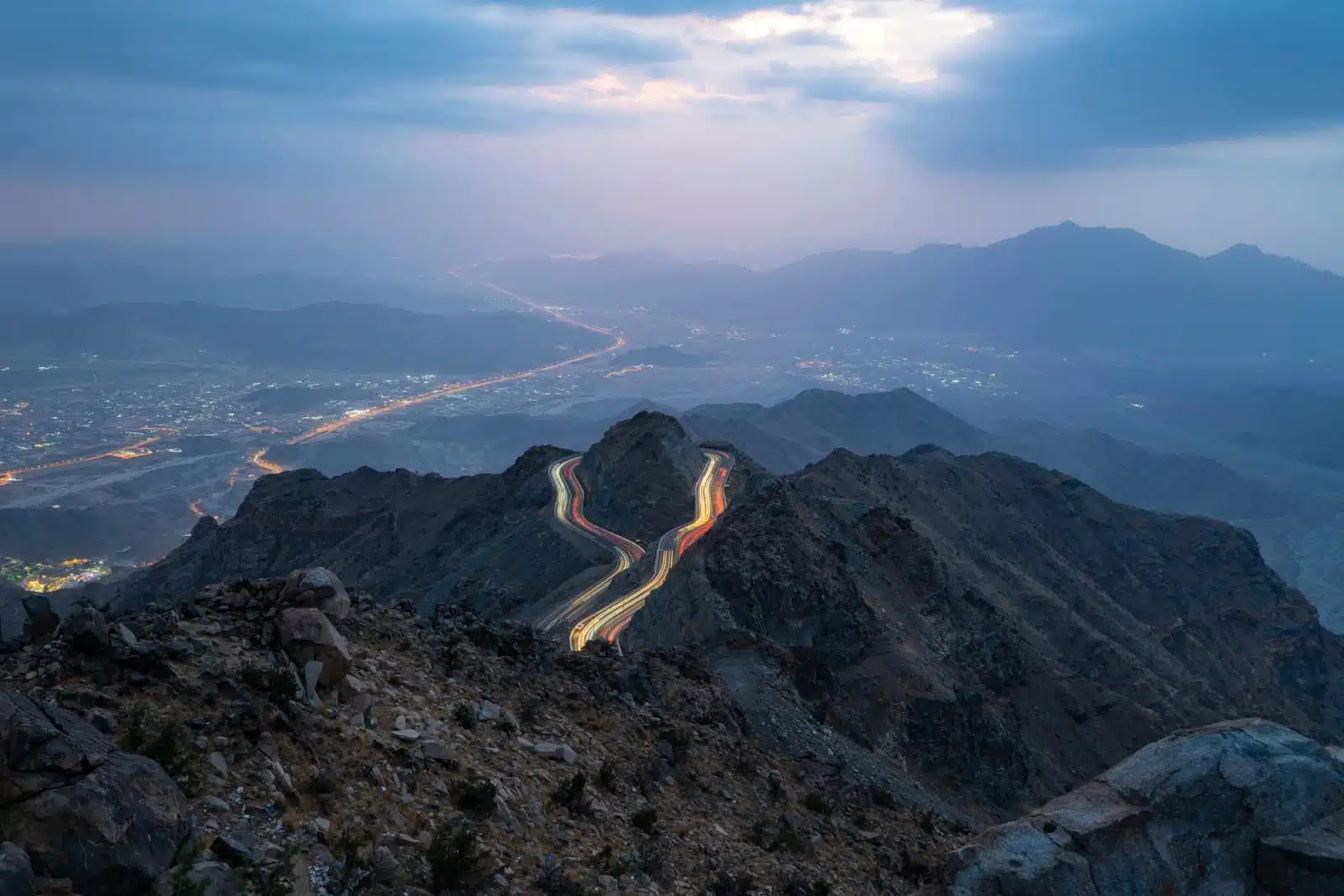
Image Credit: Shutterstock / Hyserb
Taif is often referred to as the “City of Roses,” renowned for its fragrant rose gardens that bloom each spring. Located in the mountains near Mecca, it serves as a summer escape for residents of the hotter lowlands, offering a cooler climate and lush scenery. The city’s rosewater and perfumes are sought after across the region, with the annual Rose Festival celebrating this floral heritage. Taif’s historical significance is also notable, with landmarks such as the Shubra Palace and the Turkish Fort telling the stories of the city’s past. For nature lovers, the nearby Al-Hada mountain offers cable car rides with panoramic views and is a gateway to exploring the region’s natural beauty.
Insider’s Tip: Plan your visit during the Rose Festival to witness the rose distillation process and explore the local markets’ array of rose products.
9. Tabuk
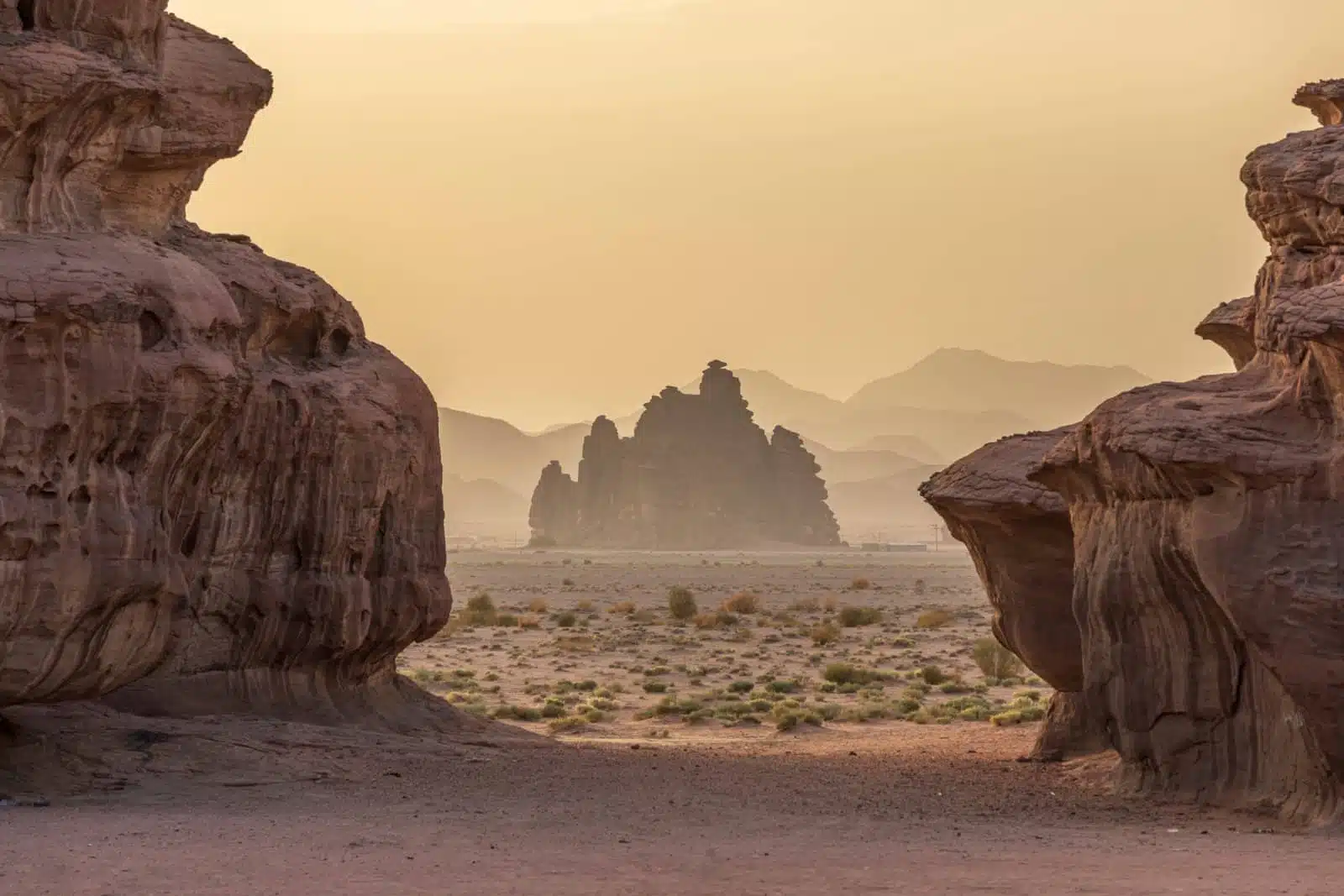
Image Credit: Shutterstock / adel14r
Tabuk, the capital of the Tabuk region, is a base for exploring some of Saudi Arabia’s most significant natural and historical sites. The city is home to the Tabuk Castle, which dates back to the Ottoman era, and the Hejaz Railway station, part of the early 20th-century railway connecting Damascus to Medina. The real treasures, however, lie beyond the city limits: the dramatic landscapes of Wadi Al-Disah and the ancient rock art at Jubbah are within reach. Tabuk’s proximity to the Red Sea also makes it a starting point for diving expeditions to the Gulf of Aqaba’s coral reefs, offering a blend of cultural history and natural beauty.
Insider’s Tip: Embark on a day trip to the archaeological site of Al-Bidya, known for its well-preserved Nabatean tombs.
10. Al Khobar
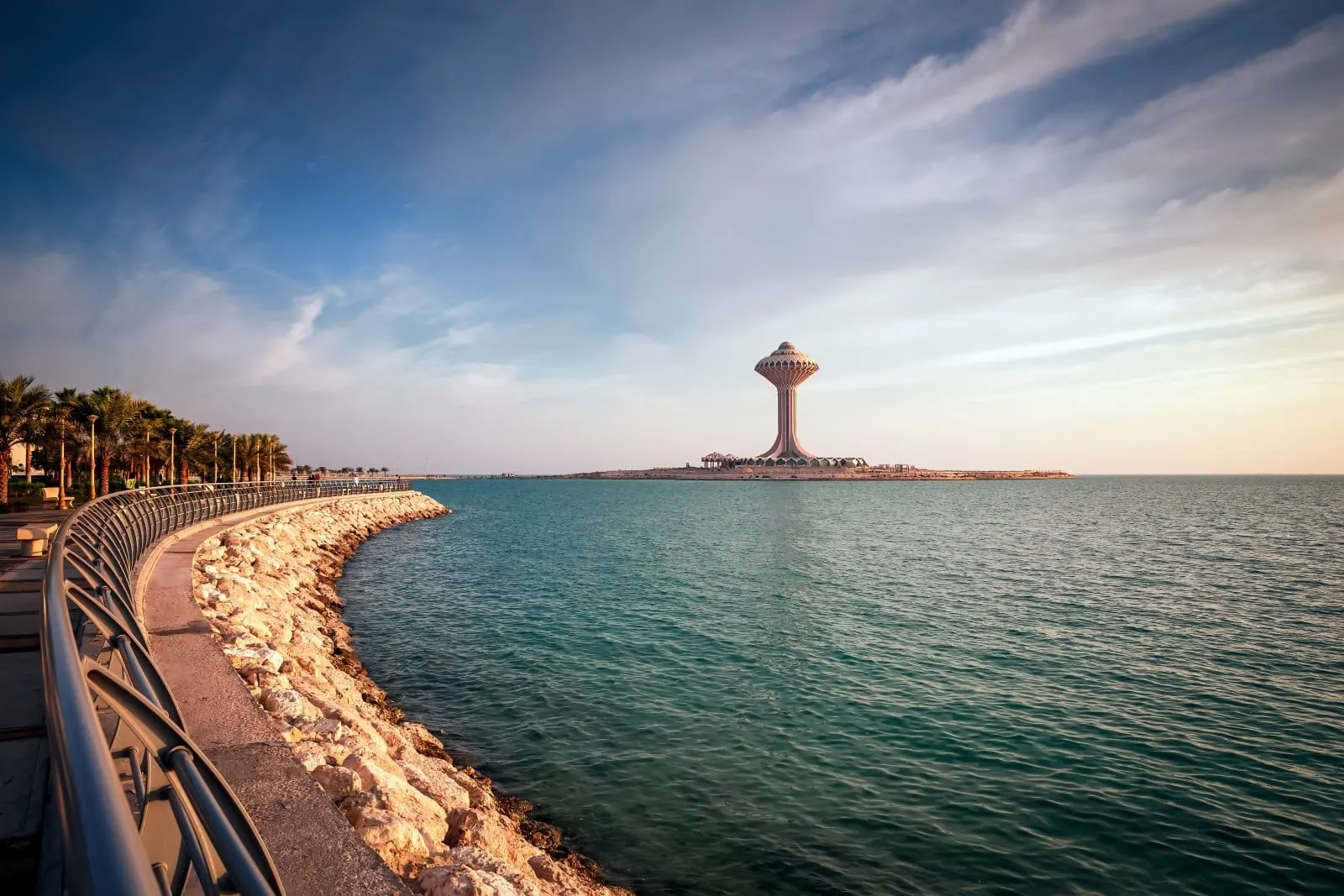
Image Credit: Shutterstock / AFZAL KHAN MAHEEN
Al Khobar, part of the Dammam Metropolitan Area, is a vibrant city known for its waterfront, the corniche, where families gather, and recreational activities abound. The city has emerged as a shopping destination, with numerous malls and the traditional Al-Rashid Mall offering a variety of retail experiences. Al Khobar’s location on the Persian Gulf makes it ideal for water sports and beach activities, with nearby Half Moon Bay being a popular spot for locals and visitors alike. The city’s dining scene is diverse, offering everything from traditional Saudi cuisine to international dishes, reflecting its cosmopolitan nature.
Insider’s Tip: For a unique outdoor experience, visit the nearby Half Moon Bay, offering water sports and family-friendly beaches.
11. Al Ahsa
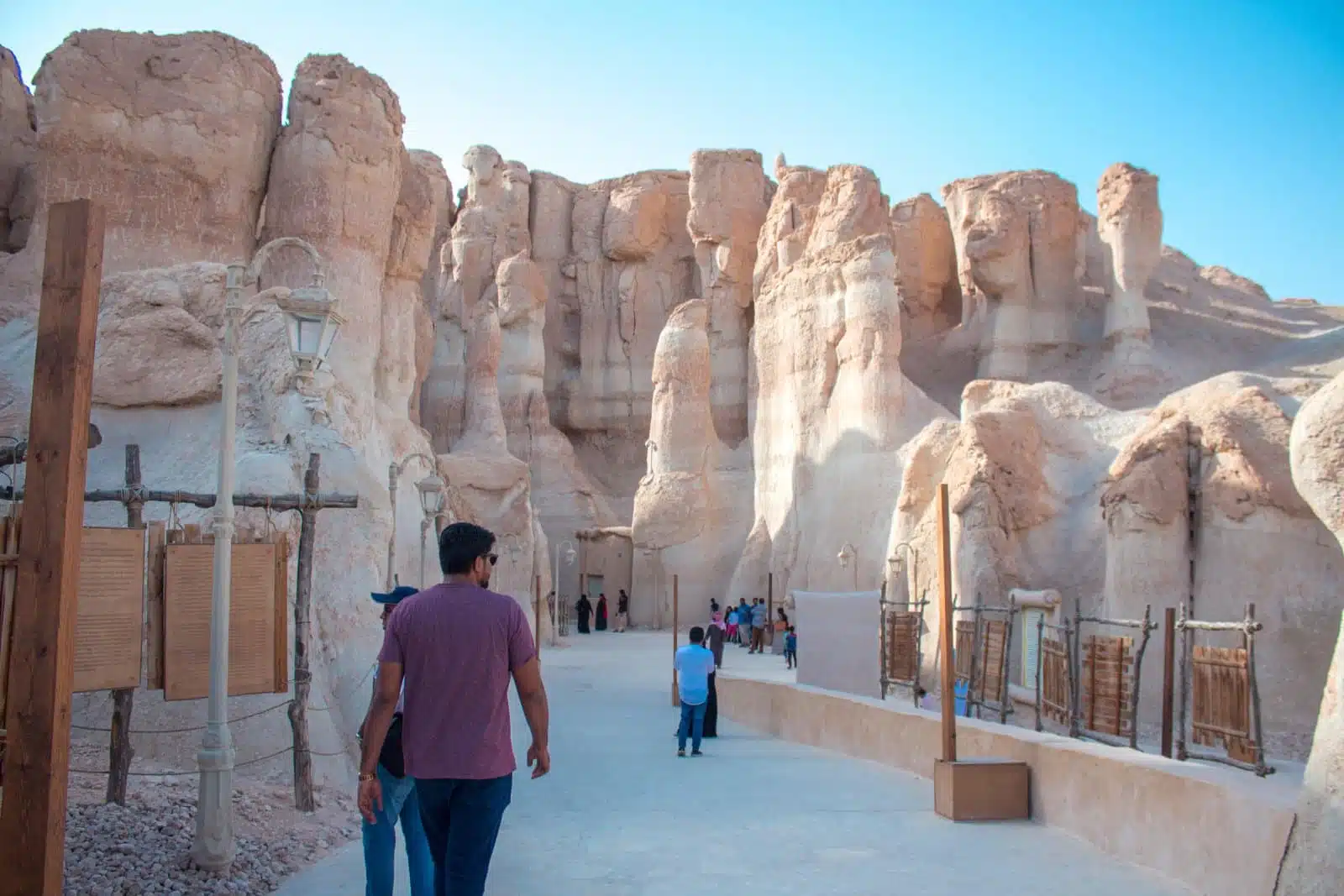
Image Credit: Shutterstock / Muhammed Noufal K N
Al Ahsa, a UNESCO World Heritage site, is an Eastern Province oasis known for its natural springs, vast date palm groves, and historical sites. The area’s cultural landscape is a testament to human settlement and agricultural development in the desert. Al Ahsa’s caves, such as the Judas Cave, offer a glimpse into the region’s geological wonders. The Al-Qarah Mountain provides natural beauty, walking trails, and panoramic views of the oasis, making Al Ahsa a unique blend of natural and cultural attractions.
Insider’s Tip: Explore Al-Qarah Mountain for its natural beauty, walking trails, and panoramic views of the oasis.
12. Jazan

Image Credit: Shutterstock / Hyserb
Jazan, located in the kingdom’s southwest, offers a tropical escape with its mountainous terrain and fertile plains. The Farasan Islands, accessible from Jazan, are a hidden gem, known for their pristine beaches, rich biodiversity, and historical sites. Jazan’s cultural heritage is showcased in its traditional markets and festivals, offering a glimpse into the vibrant life of Saudi Arabia’s southern region.
Insider’s Tip: Take a boat trip to the Farasan Islands for bird watching, diving, and exploring ancient ruins.
13. Asir National Park
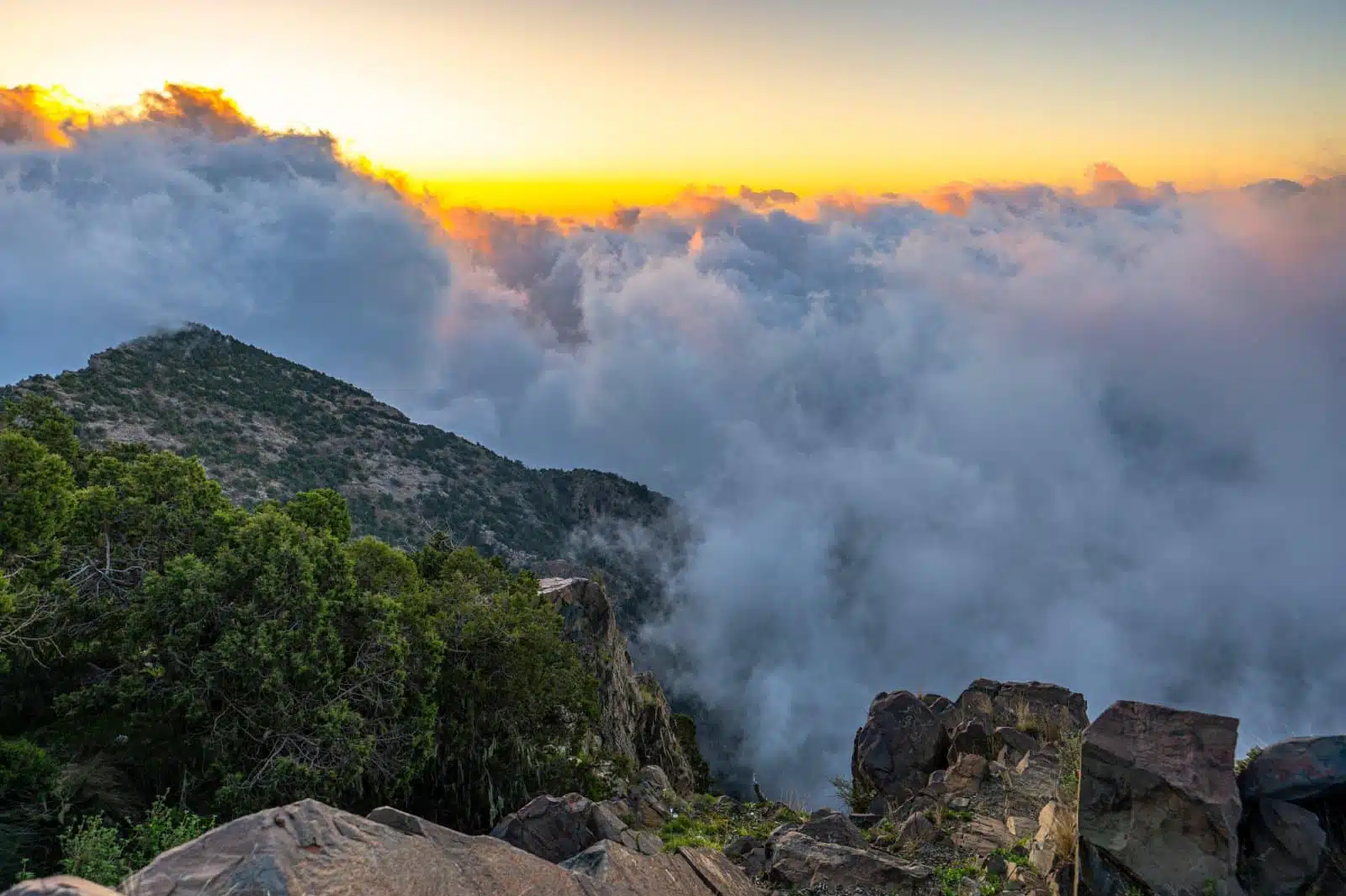
Image Credit: Shutterstock / bieszczady_wildlife
Asir National Park, spanning the Asir Mountains, is a haven for nature lovers, offering cool climates, dense forests, and diverse wildlife. The park’s scenic beauty is complemented by traditional Al-Soudah villages perched on mountain slopes. Adventure activities such as hiking, paragliding, and mountain biking are popular, making it a destination for those seeking outdoor excitement amidst stunning natural landscapes.
Insider’s Tip: Visit the park during the summer months to enjoy the Asir Season festival, which showcases the region’s culture and natural beauty.
14. Madain Saleh
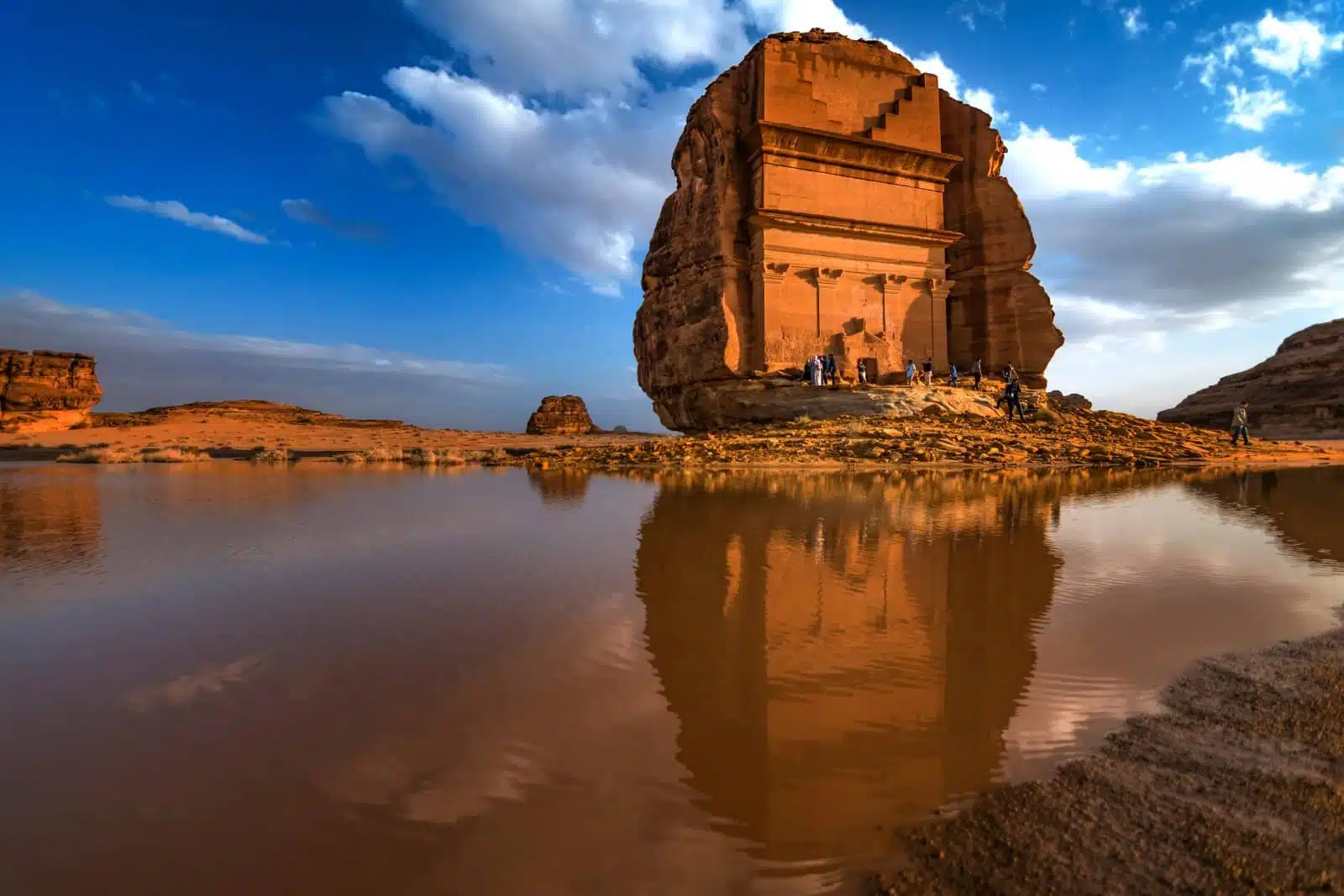
Image Credit: Shutterstock / kareemas
Madain Saleh, Saudi Arabia’s first UNESCO World Heritage site, is an archaeological marvel in Al-Ula, featuring well-preserved Nabatean tombs similar to Petra. The site’s ancient structures, inscriptions, and tombs offer a window into the Nabatean civilization, providing a unique blend of historical exploration and natural beauty.
Insider’s Tip: Engage a local guide to gain deeper insights into the historical and cultural significance of the site.
15. The Red Sea Project
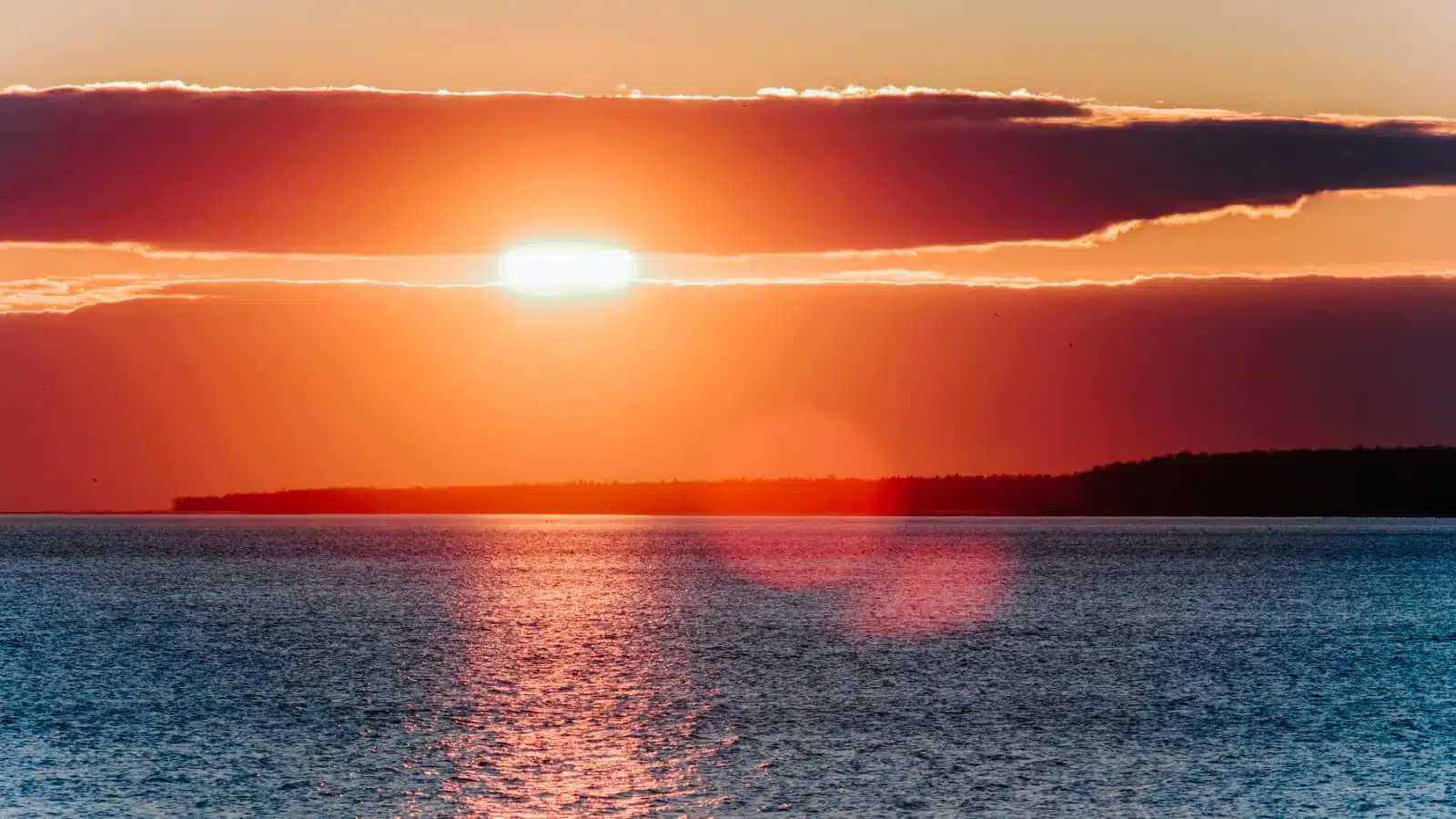
Image Credit: Shutterstock / PERO studio
The Red Sea Project is an ambitious and visionary initiative by Saudi Arabia, set to redefine luxury tourism on a global scale while emphasizing environmental sustainability. This groundbreaking development is situated along the kingdom’s pristine western coastline, renowned for its breathtaking natural beauty, untouched coral reefs, and diverse marine life. The Red Sea’s crystal-clear waters are home to some of the most vibrant coral reefs in the world, offering unparalleled diving experiences. Divers and snorkelers can explore underwater ecosystems teeming with colorful fish, turtles, and even dolphins in an environment that has been preserved for centuries.
The project aims to create an exclusive destination that combines luxury with adventure and ecological preservation. The development plans include building overwater villas, luxury hotels, and beachfront resorts on the project’s archipelago of more than 90 untouched natural islands, integrating them seamlessly into the natural landscape. The initiative also focuses on protecting the marine environment, with commitments to conservation and sustainable practices that ensure the Red Sea’s beauty and biodiversity are preserved for future generations.
Insider’s Tip: Keep an eye on the project’s development phases for early booking opportunities and the chance to experience Saudi Arabia’s commitment to sustainable tourism.
A Potted History of Saudi Arabia
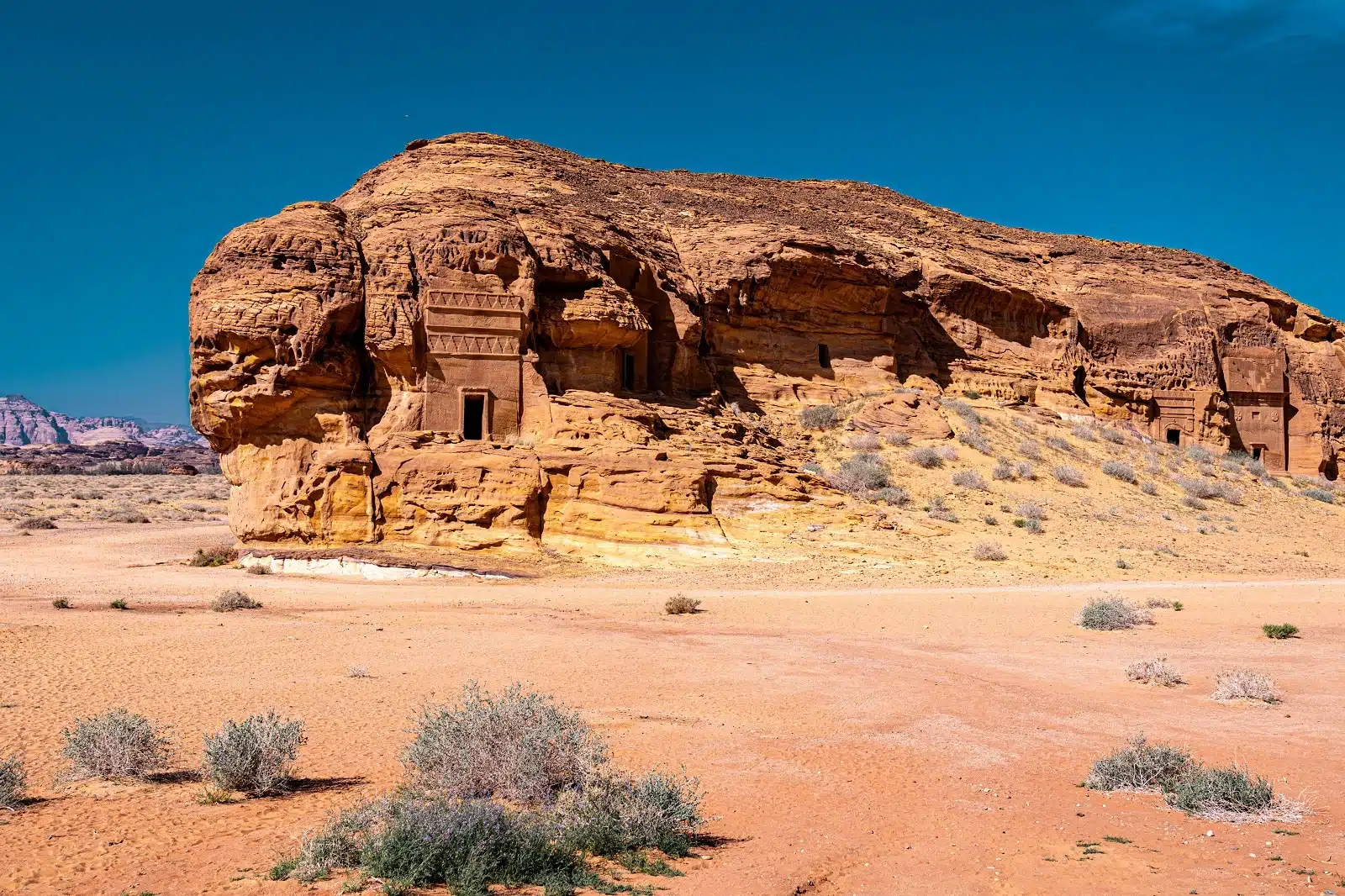
Image Credit: Shutterstock / Kuba Puchajda
The history of Saudi Arabia is a tale of transformation from a desert region inhabited by nomadic tribes to a powerful modern state deeply rooted in Islamic traditions. This history is characterized by periods of tribal warfare, trade prosperity, and the unification of diverse territories under a single nation. Here’s an overview of the key historical milestones:
Before the advent of Islam, the Arabian Peninsula was inhabited by various tribes engaged in agriculture, trade, and herding. The region was a crossroads of trade routes connecting Asia, Africa, and Europe, notably the Incense Route. Ancient civilizations, such as the Dilmun, Thamud, and Nabateans, left behind impressive archaeological sites, including Madain Saleh.
The most significant event in the Arabian Peninsula’s history was the birth of Islam in the early 7th century in Mecca. Prophet Muhammad’s revelations and subsequent unification of the Arabian tribes under the banner of Islam marked the beginning of a new era. Following Muhammad’s death, the Islamic Caliphates expanded rapidly, spreading Islam beyond the Arabian Peninsula.
By the 16th century, much of the Arabian Peninsula came under the control of the Ottoman Empire. The Ottomans ruled indirectly through local leaders and remained in the region until the early 20th century. The region remained relatively autonomous during this period, with local tribes and Islamic scholars wielding significant influence.
The foundation of modern Saudi Arabia began with Abdulaziz Ibn Saud, who in 1902 captured Riyadh, the ancestral home of the Saud family. Over the next three decades, Ibn Saud successfully unified the diverse tribes and regions of the Arabian Peninsula through conquest and treaties. 1932, the Kingdom of Saudi Arabia was officially proclaimed, with Ibn Saud as its first king.
The discovery of oil in 1938 near Dammam transformed Saudi Arabia’s economy and geopolitical importance. The subsequent development of the oil industry brought unprecedented wealth to the kingdom, allowing it to modernize rapidly and play a key role in global energy markets.
Saudi Arabia has continued to develop politically, economically, and socially while maintaining its Islamic heritage. The kingdom has played a significant role in regional politics, the global oil economy, and Islamic affairs. Recent reforms under Vision 2030 aim to diversify the economy, reduce oil dependency, and modernize Saudi society while opening the country to international tourism and investment.
The history of Saudi Arabia is a fascinating journey from ancient civilizations through the transformative era of Islam’s birth to the establishment of a modern state that balances deep-rooted traditions with ambitious visions for the future. As the country continues to evolve, it remains a key player on the world stage, rooted in its historical legacy and Islamic culture.
Modern Times
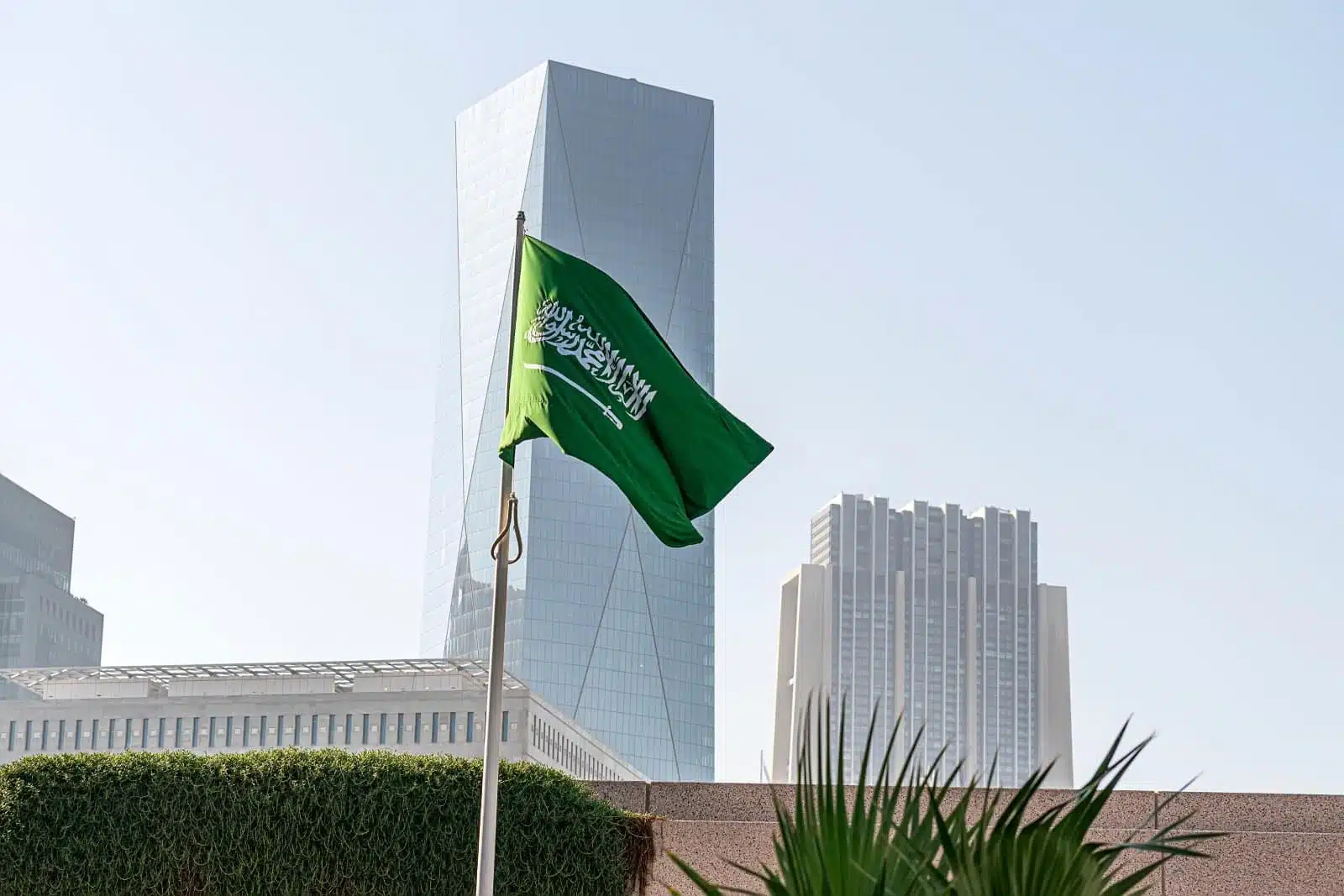
Image Credit: Shutterstock / Melnikov Dmitriy
Saudi Arabia strategically embraces tourism as a pivotal component of its Vision 2030 plan, aiming to diversify its economy beyond oil. The kingdom has historically been known for its conservative cultural policies and restrictions on tourism, focusing primarily on religious visitors to Mecca and Medina. However, recent initiatives signify a shift towards opening the country to international leisure travelers. Saudi Arabia has introduced tourist visas, relaxed dress codes for female visitors, and is investing heavily in infrastructure, including luxury resorts, entertainment options, and cultural projects. Notable developments include the Red Sea Project, transforming the Saudi coastline into a luxury tourism destination, and Al-Ula, where ancient heritage meets modern cultural festivals. By leveraging its rich history, cultural heritage, and untouched natural landscapes, Saudi Arabia aims to attract a broad spectrum of tourists, seeking to position itself as a leading destination in the global tourism industry.
Embracing Tourism
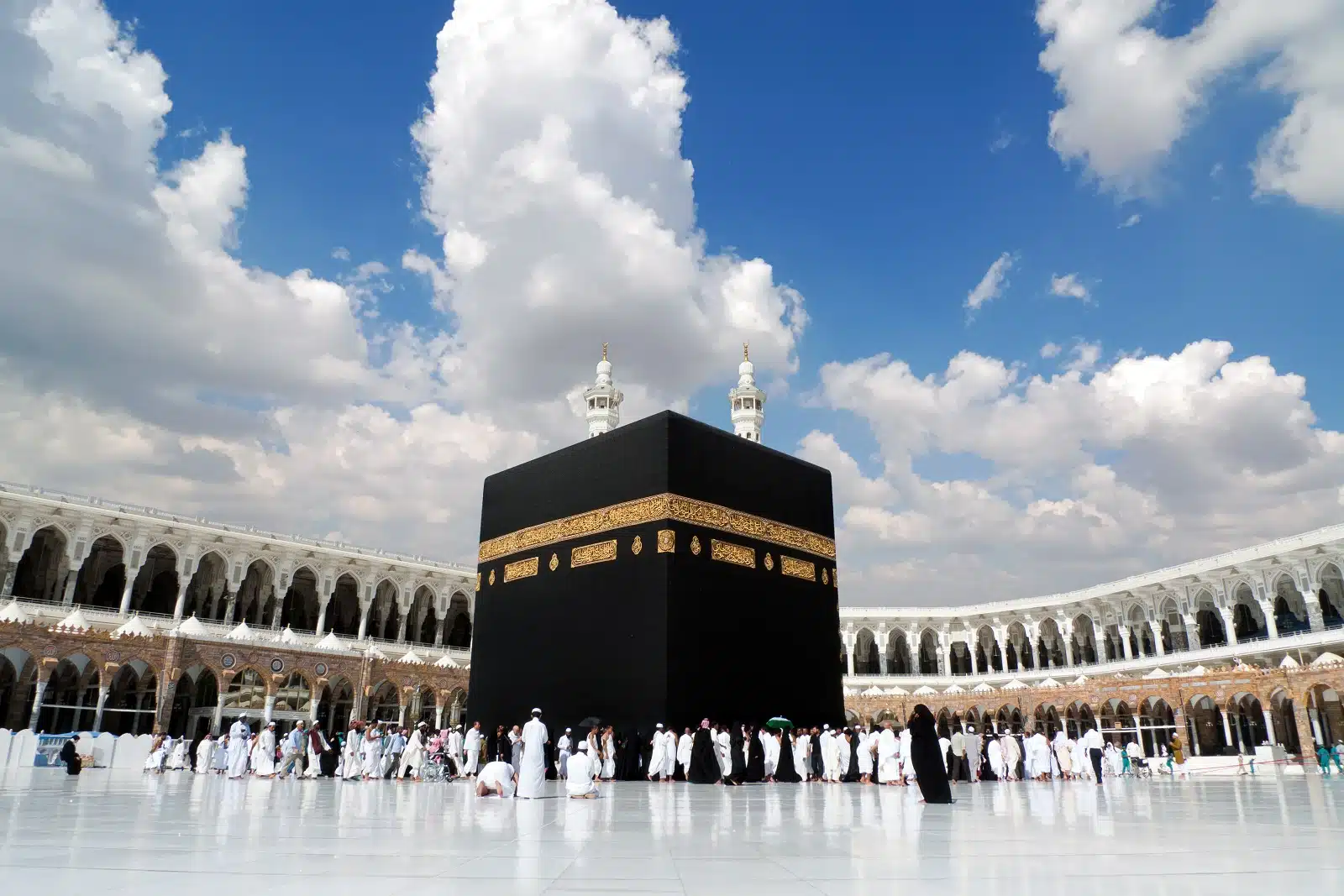
Image Credit: Shutterstock / Sufi
Saudi Arabia is actively developing its tourism sector, introducing e-visas for tourists from 49 countries and relaxing dress codes for women. The kingdom focuses on its historical sites, such as the ancient Nabatean city of Al-Ula and the At-Turaif District in Diriyah, alongside natural wonders like the Red Sea coastline. Significant investments include the Red Sea Project, aiming to create a luxury resort destination, and Qiddiya, an entertainment megaproject near Riyadh. These initiatives are part of a broader effort to attract over 100 million visitors annually by 2030.
When to Travel

Image Credit: Shutterstock / Prostock-studio
The best time to visit Saudi Arabia is between November and February when the weather is mild and pleasant, and it is ideal for exploring desert landscapes and urban centers. The cooler months also coincide with several cultural festivals and events.
How to Get There

Image Credit: Shutterstock / Prostock-studio
Saudi Arabia is accessible via its major international airports in Riyadh (King Khalid International Airport), Jeddah (King Abdulaziz International Airport), and Dammam (King Fahd International Airport). These airports offer direct flights from various cities worldwide, making the kingdom easily reachable. Upon arrival, domestic flights, trains, and an extensive road network facilitate travel within the country.
Saudi Arabia’s pivot towards tourism represents a significant transformation, aiming to showcase its unique blend of cultural riches, historical depth, and natural wonders to the world. As the kingdom continues to develop its tourism infrastructure and relax entry requirements, it is set to become a compelling destination for international travelers. Whether exploring ancient heritage sites, diving in the Red Sea, or experiencing the kingdom’s evolving entertainment landscape, visitors will find Saudi Arabia a land of discovery and contrast. With strategic planning around the cooler months and accessible international gateways, the journey to and around Saudi Arabia is becoming increasingly straightforward for curious travelers worldwide.
The Bottom Line
Saudi Arabia is a country of vast contrasts and cultural depth, offering everything from ancient archaeological sites to modern urban experiences. Whether you’re drawn to the serene beauty of its deserts, the historical richness of its cities, or the untouched splendor of its natural landscapes, the kingdom invites you to explore its many wonders. With careful planning and an open mind, your journey through Saudi Arabia will be filled with discovery and awe, revealing a nation rooted in tradition and looking toward the future.
More From The Green Voyage
Top 10 Trending Travel Destinations 2024
6 Essential Banking Apps for International Travel – Managing Your Finances on the Go
Traveling With Kids – 10 Tips to Create Memorable Family Holidays
The post A Country Guide to Saudi Arabia first appeared on The Green Voyage.
Featured Image Credit: Shutterstock / Kashif Hameed.
For transparency, this content was partly developed with AI assistance and carefully curated by an experienced editor to be informative and ensure accuracy.
Tips for Trip Success
Book Your Flight
Find an inexpensive flight by using Kayak, a favorite of ours because it regularly returns less expensive flight options from a variety of airlines.
Book Your Hotel or Special Accommodation
We are big fans of Booking.com. We like their review system and photos. If we want to see more reviews and additional booking options, we go to Expedia.
You Need Travel Insurance!
Good travel insurance means having total peace of mind. Travel insurance protects you when your medical insurance often will not and better than what you get from your credit card. It will provide comprehensive coverage should you need medical treatment or return to the United States, compensation for trip interruption, baggage loss, and other situations.Find the Perfect Insurance Plan for Your Trip
